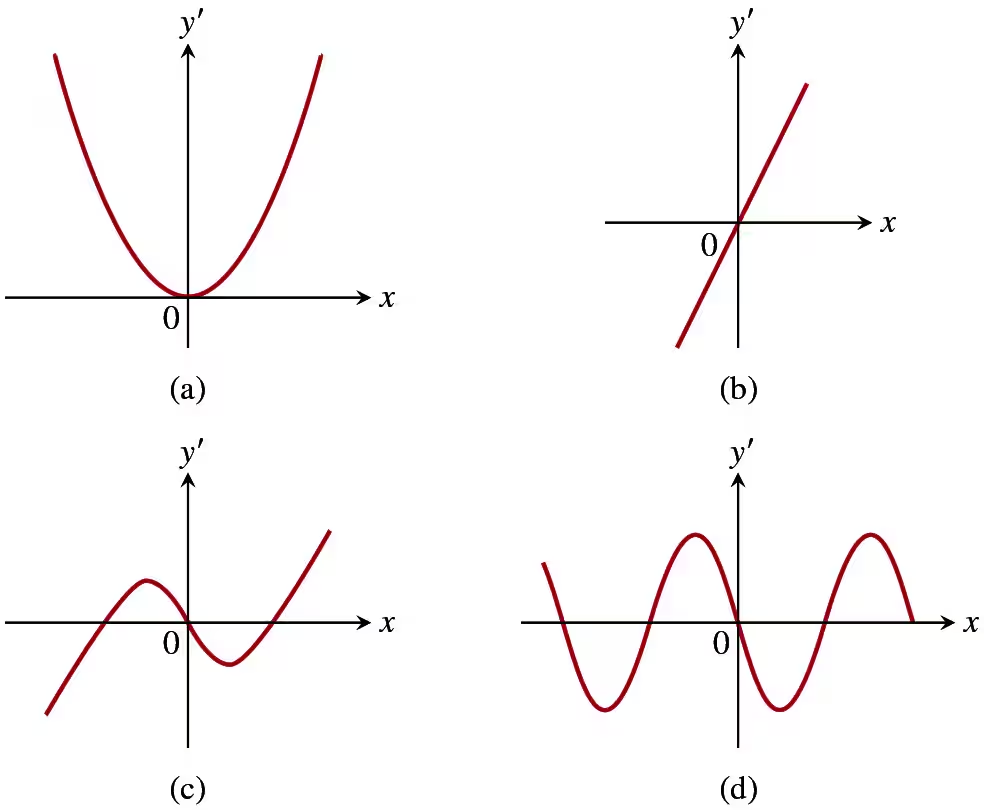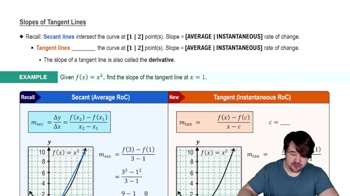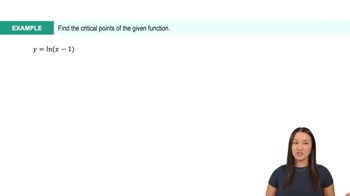Graph the function .
Table of contents
- 0. Functions7h 54m
- Introduction to Functions16m
- Piecewise Functions10m
- Properties of Functions9m
- Common Functions1h 8m
- Transformations5m
- Combining Functions27m
- Exponent rules32m
- Exponential Functions28m
- Logarithmic Functions24m
- Properties of Logarithms36m
- Exponential & Logarithmic Equations35m
- Introduction to Trigonometric Functions38m
- Graphs of Trigonometric Functions44m
- Trigonometric Identities47m
- Inverse Trigonometric Functions48m
- 1. Limits and Continuity2h 2m
- 2. Intro to Derivatives1h 33m
- 3. Techniques of Differentiation3h 18m
- 4. Applications of Derivatives2h 38m
- 5. Graphical Applications of Derivatives6h 2m
- 6. Derivatives of Inverse, Exponential, & Logarithmic Functions2h 37m
- 7. Antiderivatives & Indefinite Integrals1h 26m
- 8. Definite Integrals4h 44m
- 9. Graphical Applications of Integrals2h 27m
- 10. Physics Applications of Integrals 3h 16m
- 11. Integrals of Inverse, Exponential, & Logarithmic Functions2h 31m
- 12. Techniques of Integration7h 41m
- 13. Intro to Differential Equations2h 55m
- 14. Sequences & Series5h 36m
- 15. Power Series2h 19m
- 16. Parametric Equations & Polar Coordinates7h 58m
2. Intro to Derivatives
Derivatives as Functions
Problem 3.2.27
Textbook Question
Graphs
Match the functions graphed in Exercises 27–30 with the derivatives graphed in the accompanying figures (a)–(d).


 Verified step by step guidance
Verified step by step guidance1
Step 1: Analyze the graph of the function y = f₁(x). The graph is a parabola opening upwards, which suggests that the function is quadratic, such as y = x².
Step 2: Recall that the derivative of a quadratic function y = x² is linear, specifically y' = 2x. This means the derivative graph will be a straight line passing through the origin.
Step 3: Compare the derivative graphs (a)-(d) provided. The graph labeled (b) is a straight line passing through the origin, which matches the derivative of y = x².
Step 4: Match the function y = f₁(x) with its derivative graph (b), as the characteristics align: quadratic function leads to a linear derivative.
Step 5: Verify the match by considering the slope of the derivative graph (b). The slope corresponds to the rate of change of the original function, confirming the relationship between y = f₁(x) and its derivative.
 Verified video answer for a similar problem:
Verified video answer for a similar problem:This video solution was recommended by our tutors as helpful for the problem above
Video duration:
3mPlay a video:
Was this helpful?
Key Concepts
Here are the essential concepts you must grasp in order to answer the question correctly.
Derivative and Slope
The derivative of a function at a point is the slope of the tangent line to the graph of the function at that point. It provides the rate of change of the function's value with respect to changes in the input. Understanding how the slope changes across the graph helps in matching functions to their derivatives, as the derivative graph represents these slopes.
Recommended video:

Slopes of Tangent Lines
Critical Points and Derivative Sign
Critical points occur where the derivative is zero or undefined, indicating potential maxima, minima, or inflection points. The sign of the derivative (positive or negative) indicates whether the function is increasing or decreasing. Analyzing these aspects helps in identifying the corresponding derivative graph, as changes in sign reflect changes in the function's behavior.
Recommended video:

Critical Points
Graphical Interpretation of Derivatives
Graphically, the derivative of a function is represented as a new graph that shows the slope of the original function at each point. For example, a linear function's derivative is constant, while a quadratic function's derivative is linear. Recognizing these patterns is crucial for matching a function to its derivative graph, as each function type has a distinct derivative shape.
Recommended video:

Graphical Applications of Exponential & Logarithmic Derivatives: Example 8
Related Videos
Related Practice
Textbook Question


